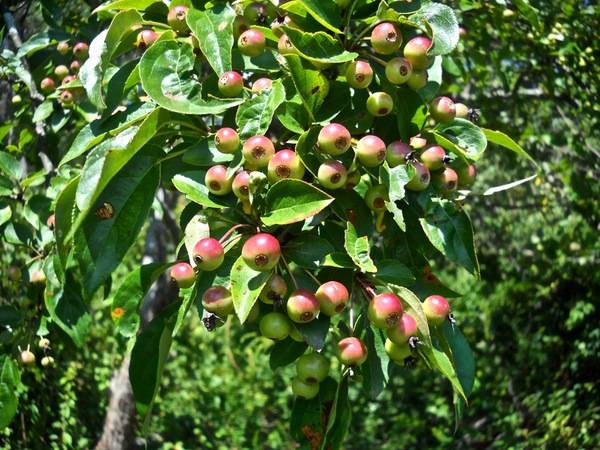crabapple A
Crabapples and the regular eating apple are in the same plant genus Malus and all are native to Eurasia with the exception of a few crabapple species native to North America. A tree is classified as a crabapple if its fruits are smaller than two inches whereas trees with fruits larger than two inches are considered apple trees. Because of their profuse and colorful flowers and fruits, plant breeders have created up to 1,000 varieties of crabapples. That alone is an impressive number but consider that there are over 7,500 cultivars of the eating apple! Pretty amazing since there are no more than 55 Malus species to start with.
There may be as many as 31 crabapple trees of five different types found throughout Salter Grove. Since there is no definitive crabapple identification guide, each distinct variety will be identified by a letter until further information is available. The variety we have labeled crabapple A is the first crabapple to flower at Salter Grove. its fruits are less than an inch in diameter and the sepals do not persist on the slightly flattened fruit. Thus far, four individuals of crabapple A have been found, one growing near the edge of woodland along the Upland Trail, and three along the Marsh Trail.
The crabapples at Salter Grove could have been planted by the summer residents who predated the park. However, except for a few large individuals growing on the edge of woodland, most of them are small stems growing beneath much larger trees. They were more likely brought in as seeds by birds.
Crabapples decorate many urban landscapes because of their showy leaves, flowers and fruits, because they require little maintenance once established, and because they are drought tolerant. Their fruits are increasingly sought after by city-dwelling foragers in the fall. The fruit of crabapples is not as meaty nor as sweet as that of the orchard apple but can be transformed into very tasty jellies and cider.

